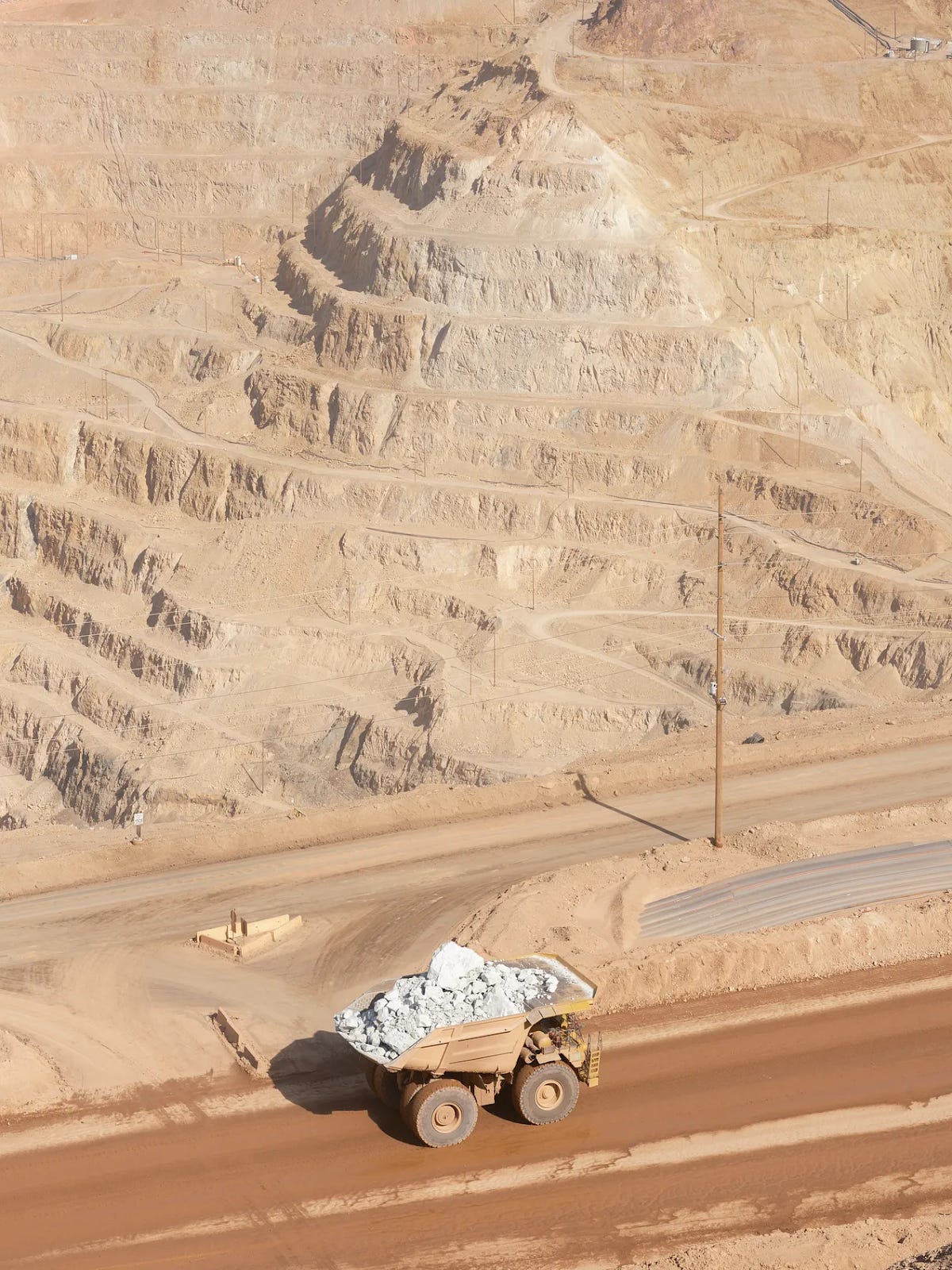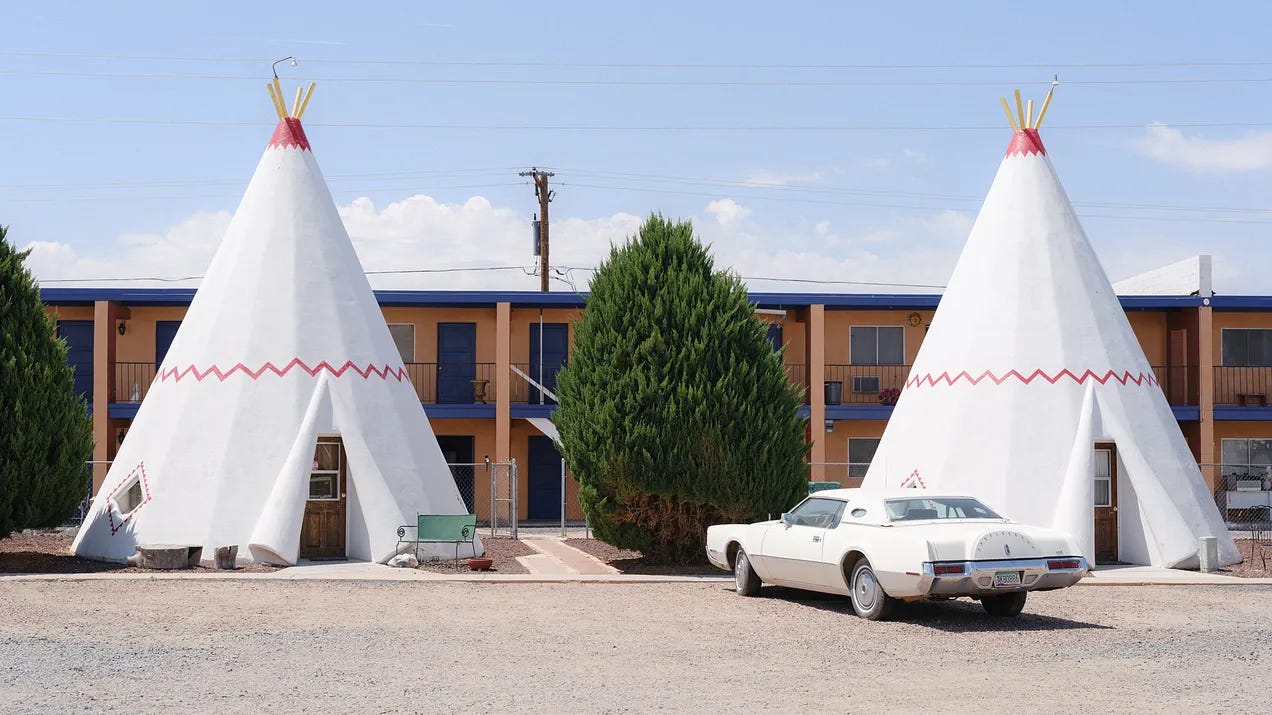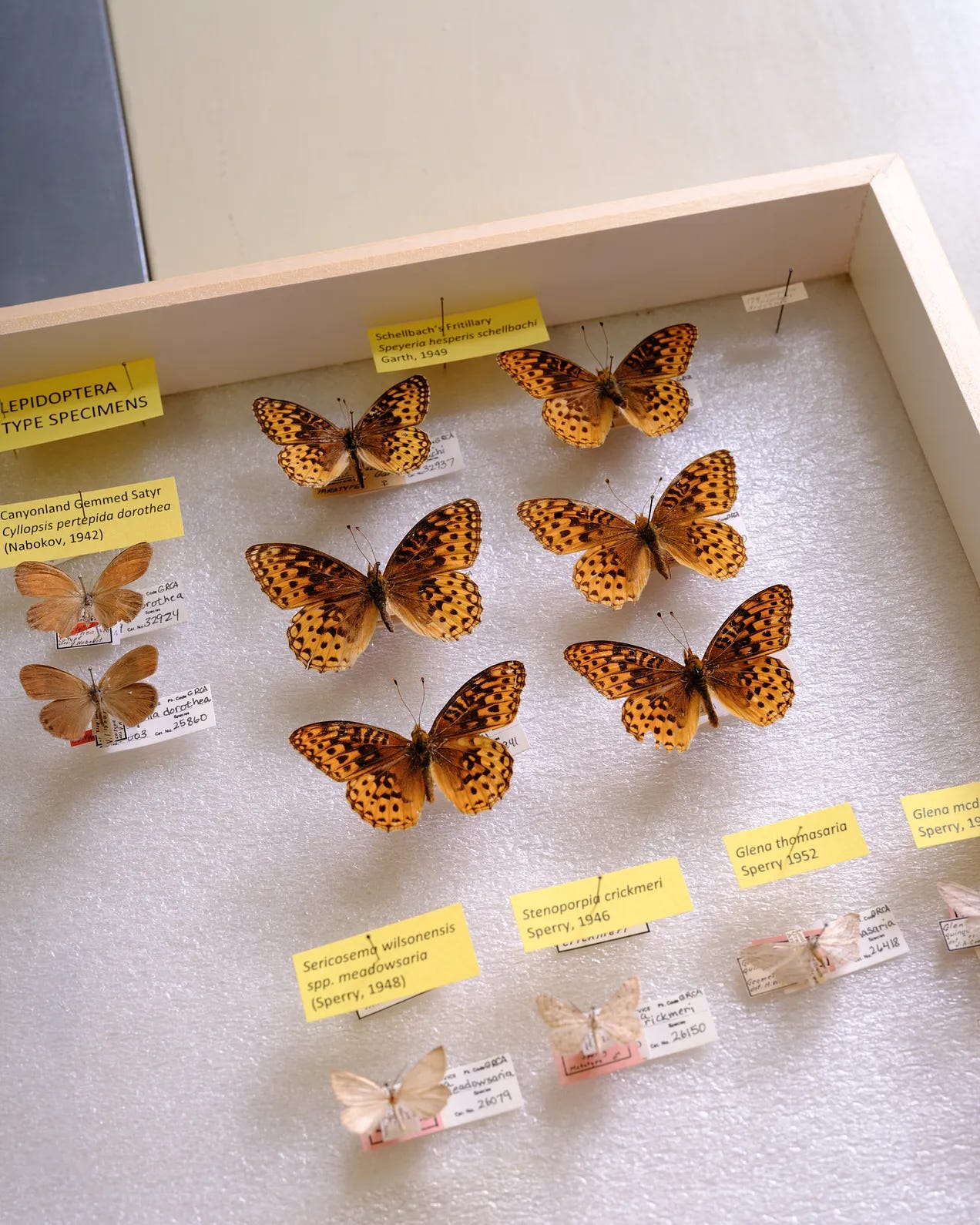This past June, I took a roadtrip with my good friend, the photographer David Blakeman, for a story about Vladimir Nabokov in the latest issue of PHOENIX Magazine. You can find a copy in Safeway magazine aisles across the Valley. In the meantime, please enjoy some postcards of our trip. You might print them out and send them to family and friends who have never had the fortune to sample the wonders of Casa Grande or Springerville.
Derelict Strip Mall - Casa Grande, Arizona
It is my own hypothesis that abandoned Reagan-era stucco strip malls must be to Arizonans what ivy-covered limestone grottos were to Pre-Raphaelites. While David set up this shot, I poked my head through one of the broken windows that hadn’t been boarded up with plywood. The hole was large enough to step through. What the hell. Inside, the shattered glass on the interior carpet looked like the crushed ice from Circle K. I found a filing cabinet with tourism literature. “See Casa Grande!”
Looking back at the parking lot framed by the hole of the broken window, I saw David’s Subaru speed by, quickly followed by a white hatchback. Outside, a short bald man with a sunburned skull pointed a phone camera at me. “We have visual confirmation of you entering the building,” he shouted. This sounded official. The back of his car had a large bumpersticker for a private security firm. I kept my hands up. Then he said: “You saw that Tik-Tok, huh? You saw that YouTube? You saw that Tik Tok YouTube?!”
I did not see that Tik Tok YouTube. I backed into David’s car with my hands raised, and we drove away.
Gas Pump - Three Way, Arizona
Some Arizona town names have a moral: Show Low, Love. Some are existential: Why, Nothing. Some are festive: Christmas, Santa Claus. Some are…suggestive.
We started our morning in a town off US 191 called Three Way. This town had three highways, one store, and zero bathrooms. When I asked the store’s one clerk where the nearest restroom was she said, “Next door.” But there was no next door. Either she meant the town of Duncan, which was three miles away, or she meant for me to take a leak in the sage brush. And I ain’t dropping my trousers in Three Way.
A roadtrip game: write a scene of dialogue using only Arizona town names:
“Surprise!”
“Three Way?”
“Why?”
“Nothing…”
“Love?”
“Wood Trap.”
It’s a little crass. At least I didn’t include Santa Claus.
Conveyor Belt - Morenci, Arizona
Twenty minutes north of Three Way, David spotted what appeared to be a waterfall cascading out of a mountain side.
We drove closer.
Closer.
It was not until our car was underneath the torrent that the illusion unknotted itself into reality: jet black ore gushing in huge streams from a crane and gathering in a steaming pile below.
All around me, natural scenery suddenly transmogrified into man made industry. A roaring river turned out to be a rushing conveyor belt of rock. A shimmering lake mutated into a rabid vat of wastewater. We entered a cave blasted into a mountainside and heard what sounded like bats chirping. Turning off the car, we walked in darkness to the cave’s smooth walls and found, bolted to the sides, hundreds of rusted metal speaker boxes emitting artificial bat-sounds.
What is this place, I asked the Lord. Morenci, replied a voice from below.
Copper Mine - Morenci, Arizona
I do not know whether to glory or weep over the human spirit in Morenci. It is a man made wonder. It is a Mario Kart track come to life. It is the largest open-air copper mine in the world. We saw no other cars in Morenci except ore-hauling trucks whose engines alone weigh more than a small airplane. Their tires are the stuff of idol-worship. They are the size of apple trees. If I were to stand next to one when it blew I am sure I would be skinned alive.
Morenci has my favorite “scenic view” pull-off in all Arizona. It is clean and includes educational signage. There are even square apertures cut into the fencing so that David can poke his camera through for a good shot. I read that 39.1 billion pounds of copper are produced here and that this mine is a world leader in the “leaching extraction process.” David took photos of a nearby avalanche that was actually just clouds of dust from a subterranean explosion.
David loves this place. I think that he thinks it is like a David Lynch movie. He pulls over every few minutes and mutters words like “dear God” and takes a photograph.
I, on the other hand, found myself engaged in a mighty struggle with my medium. Whatever of the natural world that the English language was intended to represent has been dynamited from this place. In my notebook I wrote, “All churches should be in open-air mines.” No idea what this means.
Man With Chair - Alpine, Arizona
Because of David’s lollygagging, it took us one hour to drive four miles in Morenci. We finally got a bite to eat at Ye Olde Tavern near Alpine. There was no lederhosen at Ye Olde Tavern but there was honkytonk music.
The band leader asked the crowd, “How many of you been married fifty years?”
An old man raised his hand.
“Fifty years of marriage,” he said. “And six wives!”
A can of Busch Lite cost $2.50 at Ye Olde Tavern, which meant I very quickly shed all self-consciousness that stems from wearing Birkenstocks in such a place. David and his quest for the Great American Photograph, however, got us a warning from the bartender, and when I returned from the bathroom David gave me one of those “let’s scram” looks. Probably for the best–I don’t trust a polygamist who drinks.
Raul Campos - Eagar, Arizona
I am not in the mood for it today. Our room at a Howard-Johnsons in Eager last night was a tundra and I woke up to bikers revving their hogs two doors down. David is chipper because the bikers let him take Great American Photographs of them. One of them gave him his card: Raul Campos, oilfield services. I drily asked David if he is planning on opening an oil refinery. Not in the mood.
Cut to: us looking upon the Ho-Jo’s continental breakfast. I am an unabashed urban elitist when it comes to hotel breakfast. Give me Chobani or give me death. David, however, does not hesitate to dive into hot chafers of eggs, bacon, and potatoes. I pick at some potatoes and condescend to a Yoplait. This will be a long day.
Wigwam Motel - Holbrook, Arizona
I have an unhealthy obsession with knowing what the interiors of these dwellings look like, but the lady in the office flat-out ignored my rapping pleas on the glass door. It was 11:00 AM and already pushing triple digits, and she was deep in the throes of a siesta from which I suspect she will not wake until Halloween. I walked around the parking lot until I met an employee named Octavio, who recently graduated from Holbrook High. We made small-talk. He wants to study Psychology at NAU. I asked if someone’s keen desire to sleep inside a reproduction wigwam reveals anything about his psyche.
He said, “I don’t know.”
I said, “Maybe that he suffers from the irreconcilable guilt of a colonial inheritance that is daily exacerbated by his genuine interest in the heritage of what is after all the only place that feels like home?
He said, “Maybe.”
Having sufficiently impressed the powers that be, I was shown into tee-pee #13 (tee-pees 1-12 had been rented out by someone named J. Tillman). Here my sudden entrance surprised a busy room cleaner named Ricky, who was a native of the Marshall Islands. This fact totally astonished me. It was like finding a passenger pigeon on Mars. Ricky offered me a beer from his sanitation cart and told me that his family came to Arizona in the fifties after the United States detonated a hydrogen bomb off the coast of his homeland. According to his grandfather, who saw the blast, they all thought “the world was going to end.” The idea of a Marshallese man forcibly removed from nuclear fallout cleaning a chintzy capitalist reproduction of American Indian culture in Holbrook just about makes my grad-school brain explode. He was nothing but smiles. I advised him never to visit Morenci.
Butterfly Specimens - Grand Canyon Museum Collection
Our chief aim for this entire trip was to see Vladimir Nabokov’s butterfly specimen at the Grand Canyon Museum Collection. Nabokov discovered a new species of butterfly when he visited the Grand Canyon in 1941. He spent most of his days hunting butterflies in the morning and writing Great American Novels in the afternoon. Talk about the life. I envy artists with outdoorsy hobbies like butterfly hunting or fly fishing as it seems to make for a well-rounded soul. David collects plaster casts of early-hominid fossils. I eat Chobani.
The road from Holbrook to the Grand Canyon was straight out of a Zane Grey pulp. Hugely flat and scrubbed and dotted with windmills and propane tanks burnished with a fine patina. Endless sky. I think the sunsets here would, in the words of Seamus Heaney, “catch the heart off guard and blow it open.”
Unfortunately, I could not bask in the sublime as I was anxious about the Grand Canyon. David was under the impression (because I had told him so) that I had scheduled an official meeting with the head curator of the archives so that we could photograph Nabokov’s specimen. This was a half-truth. In reality I called someone at the park’s archives a week ago saying that we were coming by and they said “Ok.” I kept interrupting our drive ostensibly to take a leak but really I was desperately trying to reach someone at the museum. This whole stretch would be a waste of three hours, and the whole trip potentially a waste of a weekend, if no one showed up to open the door. I must have been the first person since Nabokov who felt he would be disappointed with the Grand Canyon if he didn’t see a butterfly.
During this stretch, David told me a true story about a group of guys who visited the Grand Canyon when he was in high school. Somebody in the group said wouldn’t it be funny to drive all the way there and intentionally not look at the Canyon and one guy (we all know this guy) perked up with a look of sudden, intense clarity and was like yeah, that’d be legendary. So that’s what he did. He walked backwards to the edge of the rim and stared at the parking lot the whole time. Then they drove home. For some reason this story reminds me of the town of Morenci. “What an idiot,” I said, but secretly I promised myself that I would do the same if my butterfly mission failed.
It was 3:45 pm when we drove past a series of security gates and into the parking lot of a windowless building labeled Grand Canyon Museum Collection. A sign by the door states that the collection closes at 4:00 PM. At that moment what I was thinking was: fat chance. But I must save face. I pretend that all is well as I sauntered up to the door and knocked. It opened. “Are you Chandler?” a woman asked. I could have kissed her. She was like the platonic ideal of a librarian. It turned out that two ladies ran the place and their sense of logistics was military-grade. Not only did they ensure someone would be here to let us in, but they fished Nabokov’s specimens out of the archives and set them up in a clean, well-lit space for David to take photographs. This flair of bureaucratic kindness overwhelmed me. I got to see the Grand Canyon after all.
Kolb Studio - Grand Canyon National Park
You can find the rest of David’s photos from our trip on his terrific Substack, Pictures of Us.
My latest for County Highway, about eating my heart out with regenerative ranchers at the Bitcoin Conference in Nashville, is out now. Phoenix folk can find it at Zia or Stinkweeds. New York folk can message me and I’ll bring you a copy. Everyone else can find it here.












Photographic lollygagging is my greatest strength. 🙃 Excellent work, Chandler!
Nice—Sounds like a fun trip! I have a book on Morenci I need to finish (part of a six volume series!).
https://www.goodreads.com/book/show/2469821.Railroads_of_Arizona_Vol_3